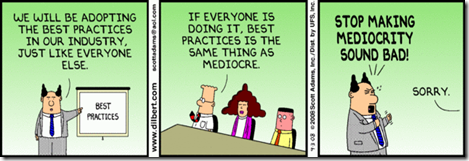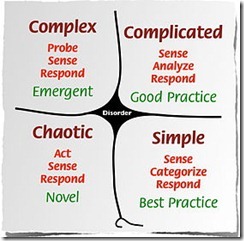Yesterday another great British institution slid into the history books.
HMV opened its first retail shop in Oxford Street, London in 1921 with great brouhaha. Composer Edward Elgar took part in the opening ceremony. Yesterday, 91 years on, the company shut its shops and handed its administration over to Deloitte with the expectation that its assets will be sold where possible and the company laid to rest.
Music lovers spent many hours (or weeks) browsing HMV stores, which were part of the only ‘chain’ for music when I first came to England in the early 1970s. Richard Branson’s sole Virgin Records & Tapes shop along Bayswater Road in Notting Hill was always worth a visit (although it specialised in ‘krautrock’ – not one of my favourite genres) as were the other independents in Charing Cross Road, but HMV had the variety and the volume.
HMV’s demise has come at a time that is tough for the retail trade. The global economy is still depressed, and confidence amongst consumers still low. Alongside HMV, other British consumer stalwarts have failed in past weeks – Jessops, the camera chain (founded 1935); Blockbuster, the DVD and video rental chain (founded 1989); and Comet, the electrical retail chain (founded 1933). Along with these, the UK and Irish Virgin Music stores were sold in 2007 and went into administration in 2009.
It seems that Deloitte and PwC are the only winners in a world where financial administrators are the current kings.
Lessons for L&D
I’ve been asking myself if there might be lessons for L&D departments here. I think there are.
A common strand runs through all of the above outcomes. It’s not just exposure to tough economic times and having to make changes to do more with less, and do things differently. Almost all individuals and enterprises are facing that.
Each of the above were overtaken by circumstances (and technologies) that changed faster and to a greater extent than they thought possible, understood, and planned for.
As with the many bookshops that have been forced to close in the face of new entrants to the publishing and distribution market – Amazon and Apple – the retail music industry certainly saw what digitisation was doing. However, they didn’t grasp that it would create totally new distribution channels, new entrants from very different industries, and that it would disintermediate significant parts of the old value chain, side-line others, and build new markets that rendered old ones obsolete in the blink of an eye.
I was struck by the sheer blinkered view and ignorance of two ‘experts’ in the retail world as they analysed the demise of Jessops on BBC Radio 4 last week. One said “the real advantage of going to a store like Jessops was that you could speak to an expert who could advise on everything you might need to know about buying the right camera. You don’t get that when buying online”. The other agreed.
Have they never posted a question online? or read Amazon reviews? or joined something like photo.net and read the annual buyers guide, joined a forum or community and asked one of the tens of thousands of experts there for their freely-given advice? Why would you put greater trust in someone who worked for a store with a vested interest not only in encouraging you to buy from them, but also to buy the products that gave them the highest return? Is it because you can see ‘the cut of their jib’ or you can assess their knowledge far better by looking them in the face? Does an expert look different to the rest of us? I think not.
Equally, I asked myself, why would people prefer to get information and learn through the intermediation of their L&D department if they have the alternative of doing so faster and more easily from other practitioners and colleagues, or people in their network who may or may not work in the same team, company or country as them? Especially if they can gain that knowledge and expertise without leaving their desk or workflow.
The answer, I believe, is ‘they wouldn’t’.
Some L&D professionals will counter with the challenge “how will you know that you have been given the right information and have been helped to learn the right things?”. The answer is that people will only know that through developing a level of trust in their sources of information and learning. And they will develop trust relationships by using the information, advice and expertise they’re provided with. If they find it helps them get their work done better, faster or smarter then they’re more likely to ask again, and a competence trust relationship builds.
I don’t have the data to prove it, but I have a gut feeling that over time any one of us will build a network of trusted colleagues and advisors that will give us equally, if not better, information and advice for action than any traditional L&D department can possibly do – and certainly faster. Especially if we take the advice of Harold Jarche in thinking about the power of loose hierarchies and strong networks, and if our organisation actively encourages building a sharing, co-operative and collaborative culture of continuous learning.
What’s the point about this?
The point is that L&D departments need to adapt and do things differently, or do different things, if they are to remain relevant. Information dissemination (often the bulk of many training courses) doesn’t constitute the best use of time for specialists in building workforce knowledge and capability, nor for the intended recipients. L&D specialists should be focusing on understanding critical business problems that are being caused by underperformance and then working with stakeholders to design the best ways to solve them. This may, or may not, involve designing, developing and delivering physical or virtual training, eLearning or some other intervention.
The Importance of Speed
I think Eric Schmidt made an excellent observation when he explained why Google’s interface is so simple – no ads, no clutter, just a query box, a banner (sometimes replaced by a ‘doodle’) and two buttons - ‘search’ and ‘I’m feeling lucky’ (I’ve yet to find anyone who regularly uses the latter).
Schmidt explained that the basic Google interface is designed in that way, and won’t change fundamentally, because people “will always use the easiest and fastest way possible to find information”. If they have difficult-to-navigate interfaces, or if anything gets in the way, then they will go elsewhere if they think there’s an easier option for them. First they ‘google’ it, then they ask someone nearby, call, message or email a trusted friend or colleague, phone a help desk, or read the manual (if there is one) – in that order. If Google created any obstacles, it would not be first choice.
There is a lesson in Schmidt’s advice for specialist learning technology interface designers, although it may come too late for some. Many organisations have wondered why employees look for ways not to use their Learning Management Systems and other learning technologies. Poor interface design is often the answer. I recall using one enterprise LMS that required 13 clicks of a mouse (some counter-intuitive) to register and launch an eLearning module. And we wondered why the generic eLearning library was under-used!
The point is that people need to work at speed, and anything that gets in the way will be bypassed or ignored. If an L&D department can’t respond at speed and deliver value it will be seen as a failure.
L&D Reinvention
 HMV and the other failed institutions didn’t understand how rapidly and extremely their worlds were changing. By the time they did (if they did at all) it was too late.
HMV and the other failed institutions didn’t understand how rapidly and extremely their worlds were changing. By the time they did (if they did at all) it was too late.
L&D professionals need to take heed.
The world of learning and development has also changed. The same drivers are disrupting L&D as disrupted the music retail industry, and the camera sales industry, and the DVD rental industry, and the publishing industry, and the automotive industry, and the marketing industry, and the finance industry and countless other industries. People expect to be able to solve their problems with their performance quickly, and they expect to do so without leaving the workplace. They expect to manage their own career development, and build their own portfolios of experiences. They expect their employers to support them and provide resources to help, but they don’t expect their employer to ‘manage’ their learning and development from start to finish.
The lesson here for L&D professionals has been spelt out many times.
Most workforces are more like an orchestra than a battalion of soldiers. The role of L&D professionals needs to become more akin to a conductor (or even a page-turner for a pianist) than a sergeant-major. Expecting everyone to line up and follow the same instructions is a recipe for failure. We need to develop approaches and strategies to support organisational and individual goals in a much more nuanced way.
If there’s one lesson L&D needs to take from the failure of HMV and the others it is to fully grasp the speed and nature of the changes that are sweeping through most organisations – increased expectations of speed, relevance, and solutions that are just-in-time and not a minute late. Not only that, but also the increased expectation that L&D departments will deliver high value solutions to organisational challenges and help drive performance and productivity.
If an L&D department can’t make the internal changes needed and build the capability to do these things, then it deserves to follow HMV into oblivion.
#itashare



 We’ll see an increasing use of mobile, and some organizations will recognize the platform that such devices provide to move the full suite of learning support (specifically performance support and informal learning) out to employees, dissolving the arbitrary boundaries between training and the full spectrum of possibilities. Others will try to cram courses onto phones, and continue to miss the bigger picture, increasing their irrelevance. Further, we’ll see more examples of the notion of a ‘performance ecosystem’ of resources aligned around individual needs and responsibilities, instead of organized around the providing silos. We’ll also see more interactive and engaging examples of experience design, and yet such innovative approaches will continue to be reserved for the foresightful, while most will continue in the hidebound status quo. Finally, we’ll see small starts in thinking semantic use in technology coupled with sound ethnographic methods to start providing just such smart support, but the efforts will continue to be embryonic.
We’ll see an increasing use of mobile, and some organizations will recognize the platform that such devices provide to move the full suite of learning support (specifically performance support and informal learning) out to employees, dissolving the arbitrary boundaries between training and the full spectrum of possibilities. Others will try to cram courses onto phones, and continue to miss the bigger picture, increasing their irrelevance. Further, we’ll see more examples of the notion of a ‘performance ecosystem’ of resources aligned around individual needs and responsibilities, instead of organized around the providing silos. We’ll also see more interactive and engaging examples of experience design, and yet such innovative approaches will continue to be reserved for the foresightful, while most will continue in the hidebound status quo. Finally, we’ll see small starts in thinking semantic use in technology coupled with sound ethnographic methods to start providing just such smart support, but the efforts will continue to be embryonic. People who know nothing about connectivism or collaborative learning will profit from MOOC’s. Academics and instructional designers will tell anyone who wants to listen just how important formal training is, as it fades in relevance to both learners and businesses.The ITA will keep on questioning the status quo and show how work is learning and learning is the work in the network era – some will listen, many will not.
People who know nothing about connectivism or collaborative learning will profit from MOOC’s. Academics and instructional designers will tell anyone who wants to listen just how important formal training is, as it fades in relevance to both learners and businesses.The ITA will keep on questioning the status quo and show how work is learning and learning is the work in the network era – some will listen, many will not. Many traditional-thinking organisations will waste a lot of time and energy trying to track social interventions in the hope that they can control and manage “social learning”. Whilst those organisations who appreciate that social learning is a natural and continuous part of working, will acknowledge that the most appropriate approach they can take is simply to support it in the workplace – both technologically and in terms of modelling new collaborative behaviours. Meanwhile, we will continue to see individuals and teams bypass IT and T&D departments and solve their learning and performance problems more quickly and easily using their own devices to access online resources, tools and networks.
Many traditional-thinking organisations will waste a lot of time and energy trying to track social interventions in the hope that they can control and manage “social learning”. Whilst those organisations who appreciate that social learning is a natural and continuous part of working, will acknowledge that the most appropriate approach they can take is simply to support it in the workplace – both technologically and in terms of modelling new collaborative behaviours. Meanwhile, we will continue to see individuals and teams bypass IT and T&D departments and solve their learning and performance problems more quickly and easily using their own devices to access online resources, tools and networks. 2013 will be a great year. As William Gibson wrote, “The future’s already here. It’s just not evenly distributed yet.” The business world will become a bit more complex — and therefore more chaotic and unpredictable. Moore’s Law and exponential progress will continue to work their magic and speed things up. Learning will continue to converge with work. Increasingly, workers will learn their jobs by doing their jobs. The lessons of motivation (a la Dan Pink) and the importance of treating people like people will sink in. Smart companies will adopt radical management, putting the customer in charge and reorganizing work in small teams. Senior people will recognize that emotions drive people — and there are other emotions in addition to passion. Happy workers are more engaged, more productive, and more fulfilled. What’s not to like?
2013 will be a great year. As William Gibson wrote, “The future’s already here. It’s just not evenly distributed yet.” The business world will become a bit more complex — and therefore more chaotic and unpredictable. Moore’s Law and exponential progress will continue to work their magic and speed things up. Learning will continue to converge with work. Increasingly, workers will learn their jobs by doing their jobs. The lessons of motivation (a la Dan Pink) and the importance of treating people like people will sink in. Smart companies will adopt radical management, putting the customer in charge and reorganizing work in small teams. Senior people will recognize that emotions drive people — and there are other emotions in addition to passion. Happy workers are more engaged, more productive, and more fulfilled. What’s not to like?

